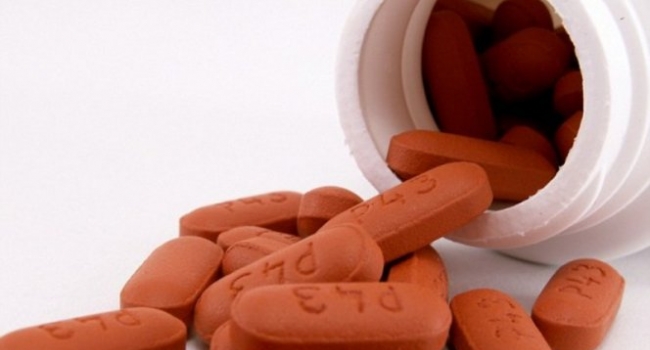- Latest news▼
-
12:16, April 19 Scientists grow human mini-lungs in lab

-
10:23, April 19 JAMA Oncology: Urine test can help rule out high-grade prostate cancer with almost 100% accuracy, study shows

-
18:00, April 18 Daily Mail: Elderly woman in China gets infected with brain-eating amoeba

-
14:19, April 18 Obesity: exercising before breakfast helps you lose weight faster

-
10:42, April 18 The Conversation: childhood trauma can cause pathological hoarding

-
08:37, April 18 Daily Mail: Satiating food reduces cravings for sweets, nutritionist says

-
18:22, April 17 First Armenian-German Conference entitled “Heart Failure Spring School”

-
08:38, April 17 Why do kids usually recover from COVID-19 more easily than adults?

-
14:37, April 16 Daily Mail: intermittent fasting is not suitable for children and women before their periods

-
16:41, April 15 Cell: in carriers of defective BRCA2 gene, sugar consumption increases cancer risk

-
15:04, April 15 305 cases of measles recorded in Armenia so far in 2024

-
14:38, April 15 Food and Environmental Virology: tea contributes to effective coronavirus control

-
12:41, April 15 Daily Mail: vitamin A, B3 and E supplements can be dangerous

-
10:56, April 15 Diabetes Care: evening physical activity is good for the heart

-
08:27, April 15 Women are more susceptible to blood loss and death during bypass surgery than men, researchers say

All materials
Study identifies defect in sufferers' cells - that could be treated by existing medication

Scientists have discovered a defect in the cells of autism sufferers - and there are already two approved medications to combat it.
Autism is a common feature of a genetic disorder called tuberous sclerosis (TSC), occurring about 50 per cent of the time.
Despite years of studies geared towards targeting TSC, it remains incurable.
However, new research by the Boston Children's Hospital suggests this condition could be caused by a defect in the way cells recycle their mitochondria (the cell's 'battery').
The scientists further showed that two existing classes of drugs counter the defect: the epilepsy drug carbamazepine, and drugs known as mTOR inhibitors.
When treated, the dysfunctional neurons were able to clear damaged mitochondria and replenish healthy mitochondria, restoring a normal turnover.
The scientists believe the study, published by Cell Reports, open new treatment possibilities not just for TSC, but for other forms of autism and neurologic disorders.
'Our findings point to possible treatments for enhancing mitophagy for some neurodevelopmental and neurodegenerative diseases,' says lead researcher Dr Mustafa Sahin, director of the Translational Neuroscience Center at Boston Children's Hospital.
Through a process known as autophagy ('self-eating'), cells digest their damaged or aging mitochondria, clearing the way for healthy replacements.
It was research into this procedure - autophagy - that earned a Nobel Prize this year.
But as Dr Sahin showed with co-first authors Dr Darius Ebrahimi-Fakhari and medical student Afshin Saffari, autophagy does not happen as it should do in many autism sufferers.
It is not the first time scientists have analyzed autophagy in patients with neurological diseases.
Research has shown issues with autophagy in people with Parkinson's disease and Alzheimer's disease.
But this is the first study that connects autism sufferers to the same defect.
Dr Sahin said it has taken this long to reach this point because the autism population is diverse and hard to define.
'We decided to use tuberous sclerosis, a genetically defined disorder that has a high incidence of autism, as a model to understand the role of mitochondrial dynamics,' Dr Sahin explained.
To reach their conclusion, the team studied rat neurons and patient-derived neurons affected by TSC.
Follow NEWS.am Medicine on Facebook and Twitter
- Video
- Event calendar
- Archive
- Most read
month
week
day
- WHO: Nigeria pioneers revolutionary meningitis vaccine 1194
- One-third of women experience menstruation-related migraines, most often during premenopause - study 1193
- Daily Mail: vitamin A, B3 and E supplements can be dangerous 1099
- Food and Environmental Virology: tea contributes to effective coronavirus control 1092
- Cell: in carriers of defective BRCA2 gene, sugar consumption increases cancer risk 1063
- 305 cases of measles recorded in Armenia so far in 2024 1057
- Women are more susceptible to blood loss and death during bypass surgery than men, researchers say 978
- Diabetes Care: evening physical activity is good for the heart 933
- Daily Mail: intermittent fasting is not suitable for children and women before their periods 887
- First Armenian-German Conference entitled “Heart Failure Spring School” 655
- Obesity: exercising before breakfast helps you lose weight faster 556
- Why do kids usually recover from COVID-19 more easily than adults? 555
- The Conversation: childhood trauma can cause pathological hoarding 553
- Daily Mail: Elderly woman in China gets infected with brain-eating amoeba 548
- Daily Mail: Satiating food reduces cravings for sweets, nutritionist says 519
- Find us on Facebook
- Poll





